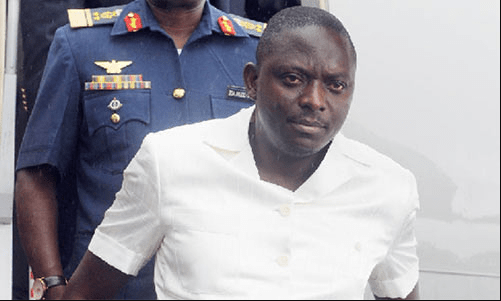
The Economic and Financial Crimes Commission (EFCC) on Monday presented its sixth prosecution witness in the corruption trial of a former Director-General of the Nigerian Maritime Administration and Safety Agency (NIMASA), Patrick Akpobolokemi,
The commission’s acting Director of Forensics, Benedict Agweyi, testified at the Federal High Court in Lagos about a signature analysis he carried out in respect of the case.
A statement by the EFCC spokesperson, Wilson Uwujaren, said the witness also narrated to the trial judge, Ayokunle Faaji, how he carried out the forensic examination on some documents bearing the signature of interest. The statement did not indicate whose signature was analysed by Agweyi.
EFCC is prosecuting Akpobolokemi, who was the Director-General of NIMASA from December 22, 2010 to July 16, 2015, and three others on 22 counts of money laundering running into about N8.5billion. He is being prosecuted alongside retired Major Genral Emmanuel Atewe, who is a former Commander of the Joint Military Task Force Operation Pulo Shield, and two other staff of NIMASA identified as Kime Engonzu and Josphine Otuaga.
One of the counts against the defendants reads: “That you, Patrick Ziadeke Akpobolokemi, Major General Emmanuel Atewe, Kime Engozu, and Josphine Otuaga sometimes in 2014, in Lagos, within the jurisdiction of this court, with intent to defraud, conspired amongst yourselves to commit an offence to wit: conversion of the sum of N8,537,586,798.58 property of the Nigerian Maritime Administration and Safety Agency and you thereby committed an offence contrary to Section 18 (a) of the Money Laundering (Prohibition) Act 2012 and punishable under Section 15 (3) of the same Act.”
The defendants have all denied the charges.
Led by the prosecution counsel, Suleiman Suleiman, at Monday’s hearing, Agweyi told the court that he received a letter of request with some documents attached for forensic examination, comparison and report from the office of the Deputy Director of Operations, EFCC, Lagos Office on April 25, 2016.
He said, “There were two categories of documents attached, including disputed documents marked X1 to X12, and known specimen handwriting and signatures marked as A1 to A8; B1 to B6, and C1 to C13. They were for me to determine whether or not, the known specimens were the ones on A1 to A8, B1 to B6 and C1 to C13.”
Agweyi said he used three methodologies, bearing in mind three principles in signature analysis, to reach his conclusion.
According to him, no two writers share the same unique combination of handwriting characteristics.
“On the basis of this, I used the first methodology, which was a simulation of the various categories of writings, using a pencil, a handheld magnifier, a piece of paper and my naked eyes.
“This methodology enabled me to identify certain characteristics among which include the commencement and terminal style of the writings; the letter forms and structural forms of the writings and the connecting strokes, among others.
“The second methodology was a stereo-microscopic analysis using a Leica stereo microscope, which enabled me to analyse the different categories of writings under magnification ranging from the original sizes to over 20 times the original sizes of the writings.
“This enabled me to identify microscopic features including line formation, the direction of pen movement, and the speed of the writing in absence of tremor among others,” he said.
The forensic expert told the court that he used a third methodology, which was a video spectra comparative analysis with the aid of VSC 5000, which enabled him to further compare the disputed and known specimen handwritings under magnification.
“It enabled me identify the existence or non-existence of characteristics that are similar or otherwise,” he said.
When asked by the prosecuting counsel what he made out of his analysis, he said, “On the conclusion of my analysis, I reduced my findings into a report dated 7 May, 2016 and my opinion was to the effect that the authors of the known specimens and signatures on the documents marked A1 to A8 and B1 to B6 also made the signatures on the disputed documents marked X1 to X12 and the authors of the known specimen and handwriting marked C1 to C13 also made the handwriting and signatures marked X1 to X10.”
“I have no personal interest in this matter; and during the analysis, I never knew the names of those involved other than what was on the face of the documents,” he said.
The case was adjourned till July 13, 2021.
